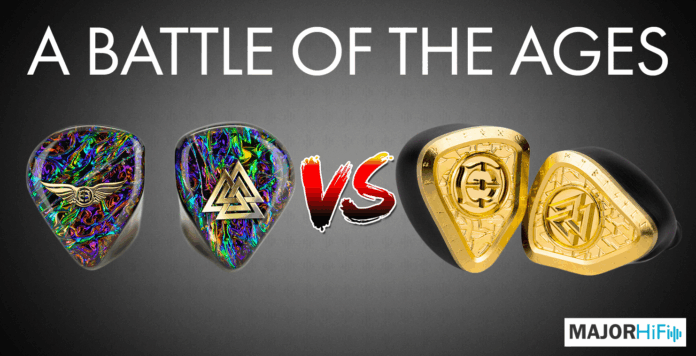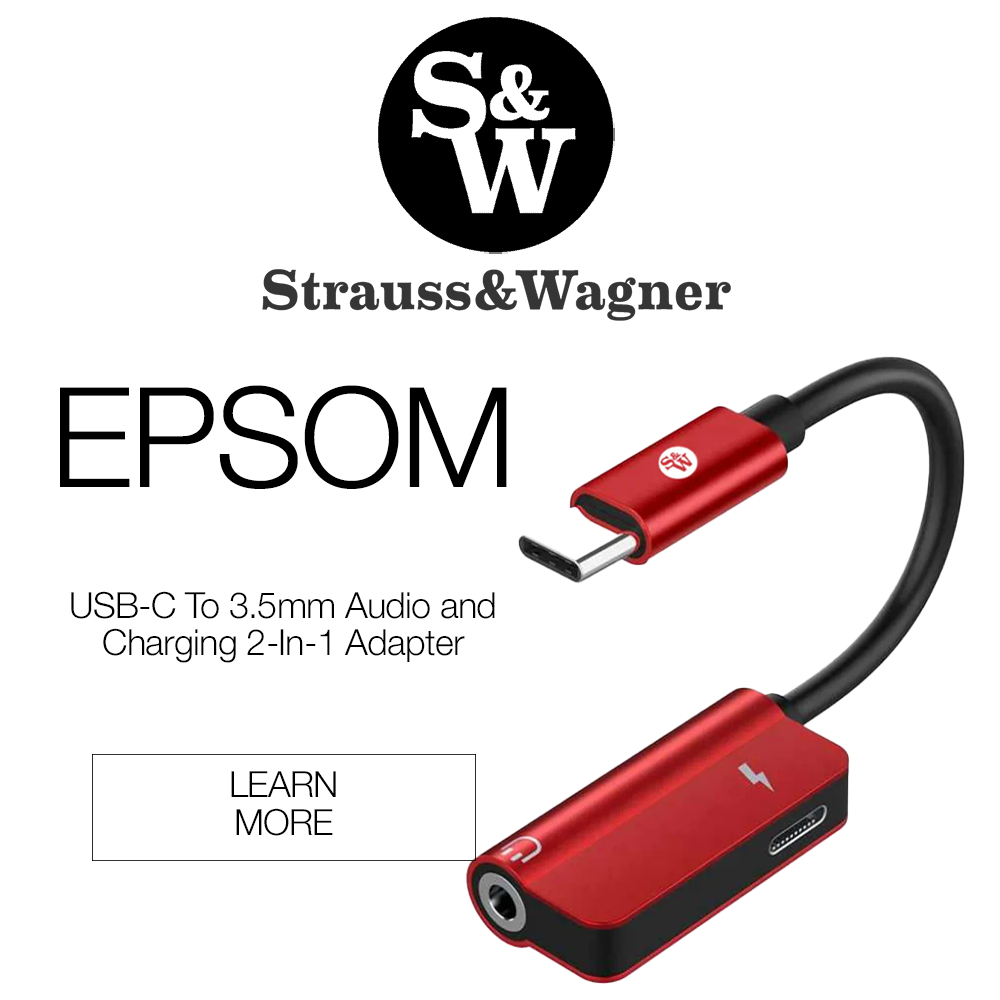Empire Ears has long been at the forefront of high-end in-ear monitor innovation. The Odin quickly became a benchmark in the audiophile world for its bold tuning, expansive staging, and near-reference detail. Fast-forward to the present, and the Odin MKII arrives with promises of refinement, power, and even more emotion. But how much of a leap forward is it? And is it enough to justify the upgrade? In this head-to-head comparison, we’ll break down the Odin MKII vs Odin in terms of design, fit, sound signature, and overall performance.
What You Get
| Odin | Odin MKII |
|
|
Look & Feel
The original Odin remains visually iconic with its Nordic mythology-inspired runes and a glassy, cosmic faceplate. It’s bold and unmistakable. The MKII introduces a cooler, frostier look with the new “Bifrost” faceplate, more crystalline and refined. Both are lightweight for tri-brid designs, though the MKII feels slightly more compact and comfortable thanks to its subtle shell redesign. Both use 2-pin connectors and have excellent build quality, but the Odin MKII’s improved ergonomics offer a better seal and extended comfort during long listening sessions.
Design
Both Odins bring an 11-driver tribrid driver configuration, but their crossover systems are different, with the MKII supporting a more advanced 10-way synX crossover. Otherwise, both IEMs carry the W9+ subwoofers, which are the real meat of the interiors here. As long as you have the right headphone plugs, the Odins don’t need an amp, but their significant power output should be considered when adjusting levels. They both have very low impedances, even for IEMs, so I preferred to start tracks on a low gain and work my way up to a level that’s comfortable.
Soundstage
When it comes to soundstage and imaging, both the Odin MKII and Odin perform at an elite level. The original Odin offers a wide, deep, and immersive stage, placing instruments precisely within a well-defined space. It creates a clear sense of left-to-right and front-to-back separation, which is excellent for orchestral music and complex arrangements.
The MKII builds on this foundation, offering an even more three-dimensional soundstage with improved layering and spatial cues. Imaging feels more holographic, with instruments floating effortlessly around the listener. The added depth and headroom contribute to a more cinematic listening experience, giving the MKII a slight but noticeable advantage in realism and immersion. Both are excellent in terms of technical performance, but the MKII’s more spherical presentation edges ahead when it comes to recreating a lifelike sonic environment.
Low End
While both IEMs exhibit impressive control and resolution in the low end, the MKII clearly takes the edge for listeners seeking a fuller and more dynamic bass experience. The Odin MKII provides a more powerful and immersive low-end response compared to the original Odin. It brings added sub-bass extension and physicality, making genres like electronic, hip-hop, and cinematic scores come alive with greater impact. In contrast, the original Odin takes a more disciplined approach to bass. It’s incredibly tight, articulate, and fast—ideal for listeners who prefer a neutral or reference-style sound. The bass never overshadows the mids or highs, making it particularly suitable for analytical listening or mixing purposes. However, some may find it lacking in sub-bass depth and emotional punch, especially when compared directly to the MKII.
Mids
Ultimately, the MKII’s more natural and emotionally resonant midrange will appeal to a broader audience. At the same time, the original Odin still caters to those who favor ultra-clarity and surgical midrange precision. The MKII sounds fuller and more organic, lending vocals a richer texture and instruments a greater sense of body and realism. The result is a more emotionally engaging experience, particularly for acoustic music, jazz, and singer-songwriter tracks. The original Odin delivers a more neutral midrange, with a focus on precision and detail. While it excels at extracting micro-information and preserving clarity, it can come across as a bit sterile or thin in the vocal region, especially with male voices. That said, it remains excellent for instrumental separation and excels in busy mixes where space and layering are key.
Highs
Treble performance on the Odin MKII strikes a near-perfect balance between brilliance and smoothness. The highs are well-extended and airy but come across as more refined and less peaky than its predecessor. This results in a treble that remains vibrant and detailed without veering into fatigue territory. The original Odin, by comparison, is brighter and more forward in the upper registers. It delivers stunning treble clarity and extension, making it ideal for hearing every last nuance in high-frequency content.
Summary
The Empire Ears Odin MKII is not a revolution, but it is a thoughtful, musical evolution. It retains the original Odin’s DNA of surgical precision and expansive staging but layers in a more organic tonality, deeper bass, and smoother highs. For those who loved the original Odin’s technical prowess but wanted more musicality and warmth, the MKII delivers. Is it worth upgrading? If you already own the Odin and crave more low-end presence, midrange body, and treble refinement, the MKII is a compelling step forward. For newcomers to the flagship world, the Odin MKII is easily one of the most complete, emotionally engaging IEMs on the market today.
The Empire Ears Odin and Odin MKII are available at Audio46.
MAJORHIFI may receive commissions from retail offers.








